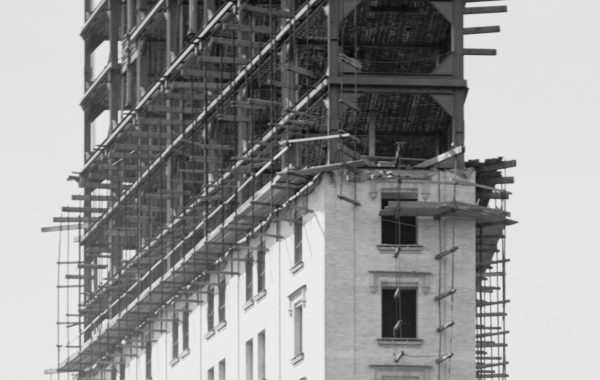That’s a picture I took in a church attic some time ago. The wood members in deep shadow are the purlins and plank deck of the roof, and are fairly ordinary structure for a building constructed circa 1900. The brightly-lit piece of wood is a support for the electric wiring, and the wiring is of course the point of the photo.
The wiring is a great example of the knob and tube system. Bare or almost-bare wires were strung taut through void spaces (for example within stud walls, or within the joist space of floors), supported mostly by porcelain spools. The stubby white cylinders in the photo are those spools. There were different types of spool: sometimes the conducting wires wrapped around the spools, sometimes (as here) they passed through a hole in the spool. The tubes were porcelain tubes put into holes drilled though studs or joists to keep the wire separate from the wood as it passed through. In this particular case, it looks like might be remnants of some wrapping on the wires, but they’re generally bare.
Note also, the large number of parallel wires. Each goes to a different light fixture in the ceiling of the sanctuary (the ceiling was the floor of the attic space I was standing in). Early bulbs had short lifespans, and if the lights were wired in series they’d all be out all the time as one bulb or another burned out. Since each light had its own circuit, only the burned-out bulbs were out.
Here’s the punchline: the structural technology is not actually obsolete, although wood framing used today would have some minor differences, but the wiring technology here is no longer allowed in ordinary buildings, as it’s unsafe. To put that in context, the vast majority of obsolete structural technologies that we encounter are grandfathered, as they are not so far from modern standards that they can’t remain in use, while mechanical systems have much shorter lifespans and the older tech is most often ripped out and replaced when a building is rehabbed.




You must be logged in to post a comment.